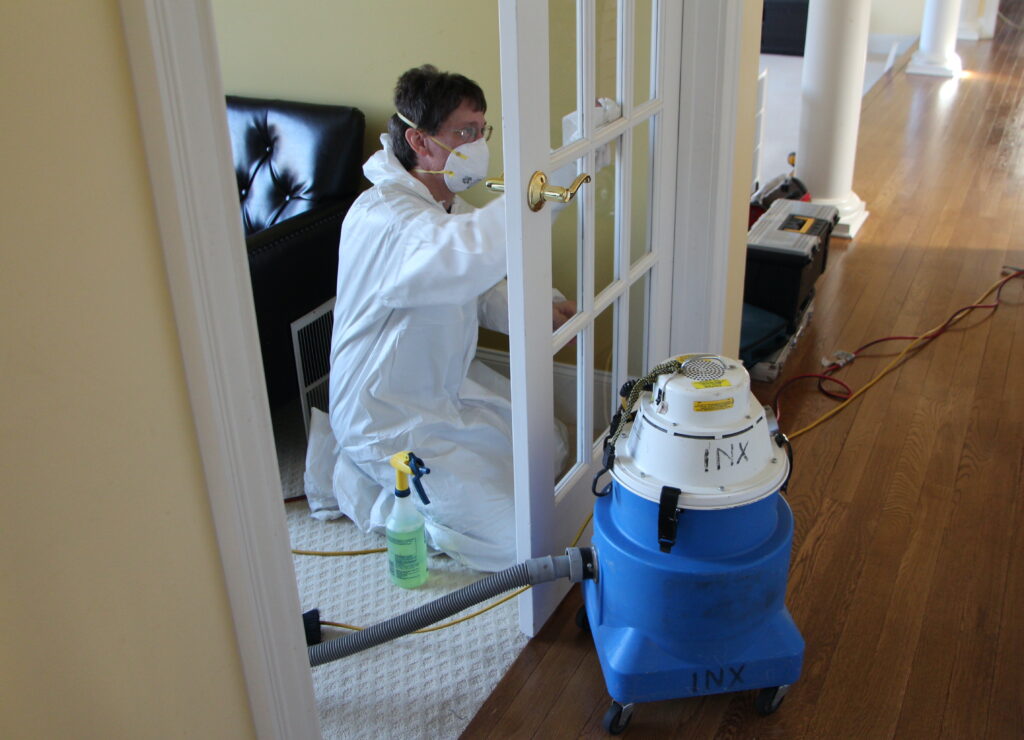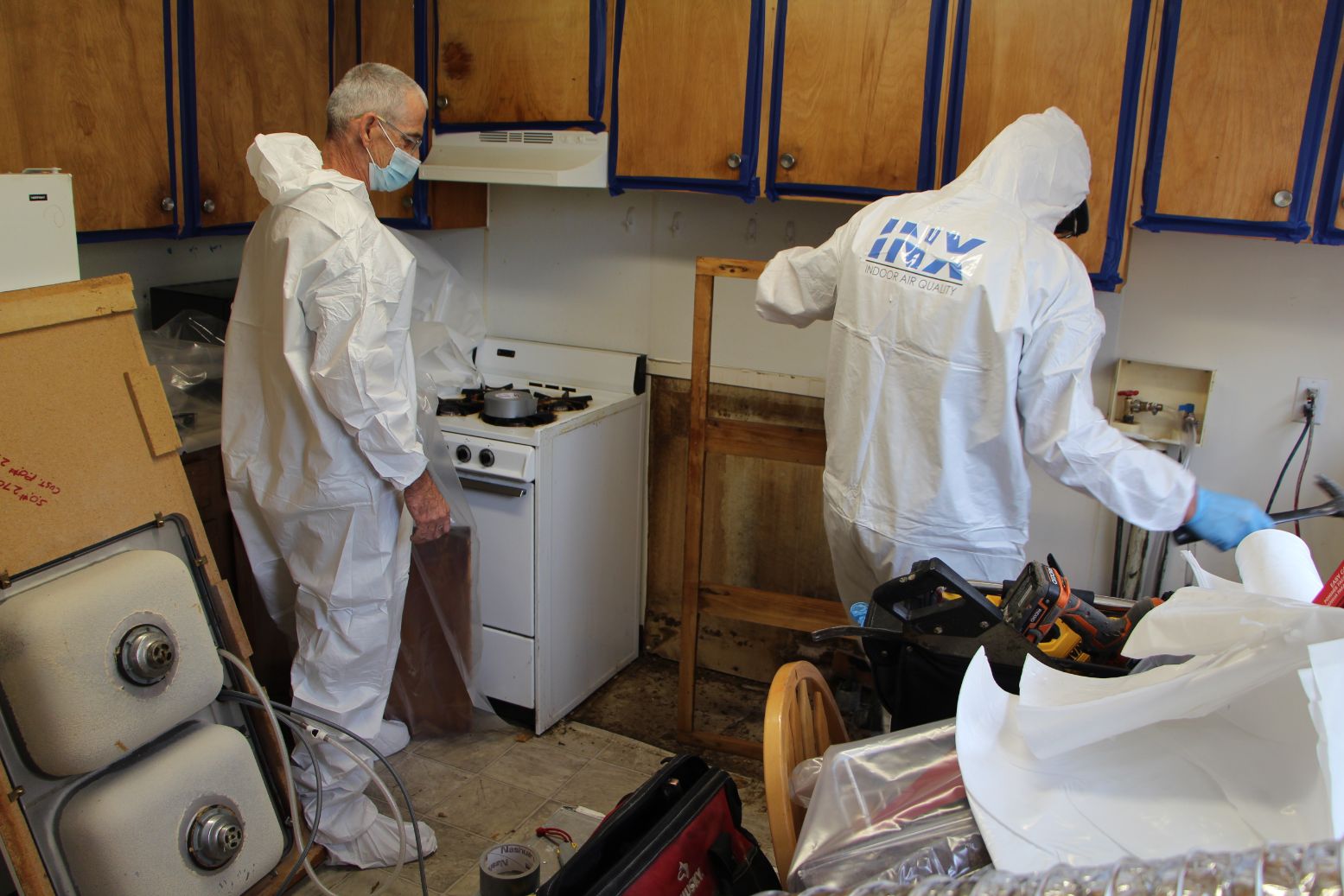John Cavanaugh, the owner of INX Indoor Air Quality, has been remediating mold for over 21 years and has successfully completed over 7,500 remediation projects during that time of operation. From residential properties to businesses or schools, each job is certainly unique, however having extensive experience across two decades has prepared John and his team to tackle any and all indoor air quality issues that arise.
Today we will sit down with John to talk with him about his experiences and discuss the 7 C’s of Mold Remediation that INX follows when helping their customers fix the issues in their homes.
Q: What are the 7 C’s of Mold Remediation?
J: While working on our revised website in 2014 I took our remediation process and simplified it into 7 steps that we follow when effectively remediating mold. We did not change any of our processes but simply adjusted the wording so that all 7 steps start with the letter C. Our hope was that it would make it easier for our customers to understand and follow our remediation process. The seven C’s are:
- Containment Construction
- Contents Cleaning and Protection
- Cutting and Demolition
- Cleaning
- Coating
- Clearance Testing
- Closing Report
Q: Do all remediation jobs require all 7 C’s?
J: Not all jobs require all 7 C’s, however when we are quoting a job and putting together our proposal we consider all steps and which are necessary. For example if an unfinished basement is empty, there will be no contents cleaning or if select demolition is not necessary, we won’t make any cuts.
Q: Why is it so important to have a Containment Constructed as step #1?
J: I cannot stress enough the importance of having Environmental controls in place when it comes to remediation. We consistently see homeowners make their mold issue way worse by neglecting to isolate the problem areas before they try to remediate mold themselves. They are clearly not doing it on purpose, however it’s because most people do not understand how mold spores spread.
I often tell my customers that mold and dandelions are very similar. When a dandelion flower matures, the yellow petals fall off and the plant pushes out the seeds. That’s when the white puffball forms. Everyone can relate to taking those white dandelion puffballs and blowing on them to spread the seeds all over the place. Mold spore acts almost identically to those puffballs. Cutting into a piece of drywall that has visible growth on it is equivalent to blowing that spore all over your property. Setting up an efficient containment so that the air is negatively pressured ensures that during remediation mold spore does not spread.

Q: What are some common misconceptions that customers can have relating to mold?
J: One common misconception we run into frequently is the idea that air quality won’t be impacted unless mold is visible. Mold spores are microscopic, so just because you don’t see visible growth doesn’t mean there can’t be a potential issue.
When we do our mold inspection, we are inspecting the entire property looking for visible growth and signs of water damage while at the same time taking air samples to see what is floating in the air. Some customers ask us to do one or the other, however they must both be done so we can fully understand if there are any issues and what would need to be done to fix those issues. I have been in so many newly purchased homes where no visible mold was observed at the time of inspection, however the air samples had elevated counts of spore. Had we conducted our inspection before the contents were moved out of the house from the previous owner, I could guarantee that we would have found visible growth on some of those items.
Another interesting thing we often hear from customers is that one person in the house can smell or have a reaction to mold when many others that live under the same roof sense nothing. Mold affects people very differently and some are extremely sensitive to even the slightest elevation of mold in the air.
Q: What types of products are used during the cleaning phase?
J: During a typical cleaning process we first use HEPA (High Efficiency Particulate Air) rated vacuum cleaners to remove bulk spore deposited on the surface and then we use disposable rags that are dampened with a disinfectant by the name of Fosters 40-80. We have been using this product for over 15 years and have never had any form of negative reaction to this product. Our field technicians use this every single day and we have had great success with this disinfectant. Also, we purposefully use disposable rags so that when they are dirty, our technicians dispose of them immediately instead of spreading the mold throughout the containment. Once we are finished disinfecting, we go over the remediated surfaces once more with a HEPA rater vacuum cleaner to prepare for coating. Fosters 40-80 SDS Information

Q: If someone thinks they might have a mold issue or an issue with their indoor air quality, what should be their first step?
J: We talk to people daily about potential issues in their homes, schools, and offices. Sometimes there is visible mold and a homeowner can send us a few photos so we can begin to diagnose their issues, or we might need to swing by a property to see what they are seeing. If the issue is not extremely obvious, we offer a full mold inspection with air sampling as our recommended first step. This allows us to visually inspect the property while collecting air samples to see what type of mold could be airborne. We understand that mold can seem scary and can cause elevated anxiety, however we have been doing this for a very long time and we thoroughly enjoy helping ease peoples anxiety and making them comfortable again.
Photo by Saad Chaudhry,



